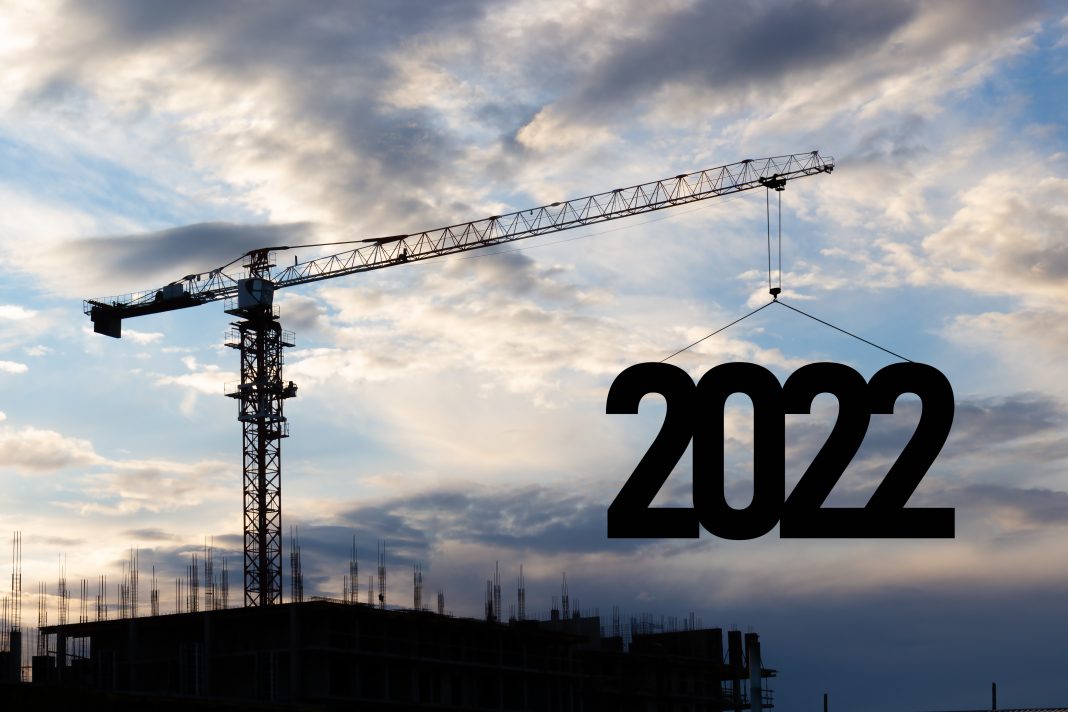Craig Sanders, joint managing director, Protrade, analyses how the ongoing raw material shortages and price inflation are going to change UK construction in 2022, forcing the industry to be more efficient
Shortages and inflation. They are two words that worry any business owner dealing with products. Those two words crop up in the news from time to time, often a temporary issue that can be contained and dealt with before business resumes and normality sets back in.
That hasn’t been the case for the construction industry, though.
Shortages of essential raw material products and price inflation have dominated the agenda in the sector for the entirety of 2021 and it will follow us into 2022.
Speaking about Protrade specifically for a moment, these two ongoing factors have ripped up our traditional trading models and doubled our stockholding. We’ve been more flexible than ever before, attempted to forecast further ahead, and have needed, at times, to put our money where our mouth is.
The same will be true for multiple other businesses like ours up and down the country.
And yet, the reality is that it isn’t going to change. In this article, I explore why that’s the case but also talk about why the answer to overcoming these shortages and price inflations lies in one word: efficiency.
The average 23% increase in raw material prices this year is just the start
Data from the Department for Business, Energy and Industrial Strategy (BEIS) during August 2021 showed us that the average cost of materials across the construction sector was 23.5% higher than they were in August 2020.
When I first read that, I was surprised – mainly because I thought that figure would be steeper.
Only two months later, in October 2021, we received notification that silicone, which is contained in a lot of sealants, was due to go up 39% in price, following a 60% price hike we’d seen earlier in the year. And while timber is not a product we sell, we’re well informed that has increased three-fold, too.
We also don’t buy steel in its raw state, but we do buy fixings manufactured from it, and they have risen by at least 25%. Channel and bracketry used in steel building systems has rocketed up over 60% since January 2021 as well. These similar increases can be found in the value of polymers and monomers, which, again, has risen by more than 40%.
I take the point that there are materials out there that haven’t experienced this inflation. However, I would argue that if you looked at the basic raw materials, including steel, wood, and polyurethane, a 23.5% increase isn’t a true reflection of where our industry stands going into 2022.
There are a multitude of reasons why our industry is experiencing this flux right now.
Demand and Brexit are easy issues to point the finger at. I’m not ignoring the fact they have played a role, but there are factors to consider – some that, actually, have been totally out of our control. These include:
- Nature – one high profile example of this is the big freeze that happened in Texas back in February – known as the Texas Power Crisis. It forced a lot of the chemical plants based in that part of the USA to shut down, meaning a number of important products that require chemicals, like sealants and acrylics, struggled to be made.
- A small pool of manufacturers – although silicones are squeezed out of a tube, it actually starts off as a metal – and there are only a few companies in the world extracting it. Therefore, any delays at this point of the manufacturing process, have far-reaching consequences.
- Panic buying – this doesn’t just apply to the construction industry and is more of a general statement on consumerism, particularly during the early stages of the pandemic. Panic buying – not just from consumers, but businesses that built up their reserves – created not only a shortage but also a demand that has inevitably led to prices increasing
However, there are two significant factors that are and will have impacts in this conversation in the months and years to come…
The shift to low-carbon energy is essential but is it happening too quickly?
The worldwide shift to low-carbon energy production is both significant and essential, and something we’re fully behind. However, the effects of that have been seen this year.
Let’s use China as an example for this.
As we know, China is in the process of lowering its carbon emissions as a country. It is also a major producer of raw materials, like steel. China’s steel industry is huge and vast, but it’s also highly pollutive. A quick way of reducing that is to put a cap on it. As a result, there was a 15% decrease in the output in 2020 compared to what was produced in 2019.
As a nation, they are committed to this low-carbon journey. They made an active effort to restrict the amount of steel they produce – despite being able to produce more. That said, these unified steps being taken across the world have caused a shortfall in global supply at a time when the demand has shot through the roof.
The historic USA infrastructure bill that will create unparalleled demand
In November 2021, you may have heard that the US Senate passed a historic infrastructure bill. It’s worth an eye-popping $1.2 trillion and centres on rebuilding the nation’s deteriorating roads and bridges and funding new climate resilience and broadband initiatives.
It’s a substantial bill. On the flip side, though, we’re expecting it will create a new wave of competition and demand for labour and raw materials – one that will even outweigh the problems that have been faced during 2021.
To provide some insight, discussions with one of our Taiwan-based fastener suppliers indicated that trying to fulfil the enormous requirements from the US market, is the primary reason why delivery timescales have more than tripled when satisfying the UK market.
The factories producing raw materials and products are turning their attention to this American bill because they know they can get money from the market, creating an attitude that no price is too high.
What does this all mean for the UK?
During 2020 and 2021, a number of construction projects were mothballed and kicked into the long grass. However, despite the issues and challenges that have been faced, we feel they are going to return next year.
That said, the transitory demand we’re seeing and what I have spoken about above, is not going to subside. If anything, that demand and the inflation of price is only going to increase. Britain needs to build and construction will continue to be a vital sector for the UK economy. It’ll simply cost more.
We have had a similar situation with HGV drivers. The shortage we have experienced this year has highlighted just how important they are and rightfully so, they’re demanding to be paid what the job is worth. I see construction in the same light.
Who’s to say that people working within construction shouldn’t be paid more, and the products they use are not deserving of a higher price? Silicone may appear to be a simple product, but the job it does is incredibly important, potentially justifying the latest price tag.
Heightened demand and price inflations are forcing businesses to be more efficient. Off-site manufacturing will only grow as a result
When profits get squeezed, as they have done over the last 18 months, processes and models get challenged.
So, with demand for raw materials sky high and price inflations on a continued incline, now feels like a clear opportunity to explore new opportunities or invest further in growing trends.
Off-site manufacturing – the process of manufacturing in a factory rather than building on-site – has been growing for some time, and considering everything that has been discussed above, 2022 could well be a big year for that industry.
In 2021, it was predicted by Savills, one of the biggest commercial property estate agents in the UK, that the proportion of new housing developments built using MMC would increase from the current 6-10% to 20% of the market in the coming years.
What we know is that off-site manufacturing is much more efficient and provides more accountability and the ability to control costs. It’s reputation, one which was once tarred, has grown significantly because of the commercial gains and competitive edge it delivers, alongside the massive increase in quality seen in recent years.
The buildings these methods produce are to an incredibly high and repeatable standard – buildings and homes that people want to live in and it can be done quickly and efficiently.
It’s also a direction that our country’s leading project initiatives are behind, with large-scale housing projects not receiving their grants if 20% of the applying project doesn’t come from off-site manufacturing.
Remember the hospital that was built in Wuhan in 10 days or the 57-storey building erected in China in just 19 days? Both of these projects were phenomenal achievements and are clear examples of what is possible with off-site manufacturing and MMC.
Back to the original point, the price of raw materials are going to continue to rise and we need to find savings in other areas.
Efficiency is the keyword. Using that 57-storey tower in China as an example, that would have taken a year or two to build traditionally and would have required funding from the bank. All of that has been avoided because it was up in 19 days and brought huge savings.
I believe that it will be these types of savings that will help to offset rising materials and labour costs and we’re going to be seeing far more examples of projects like these in the near future.


















